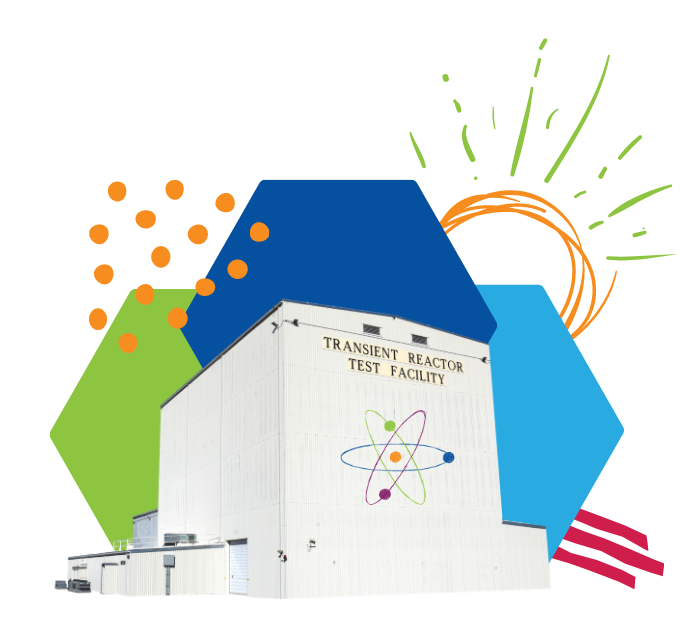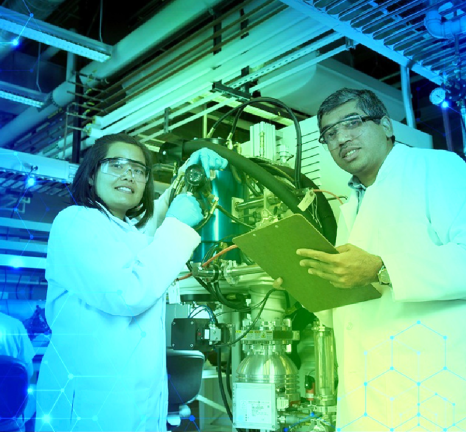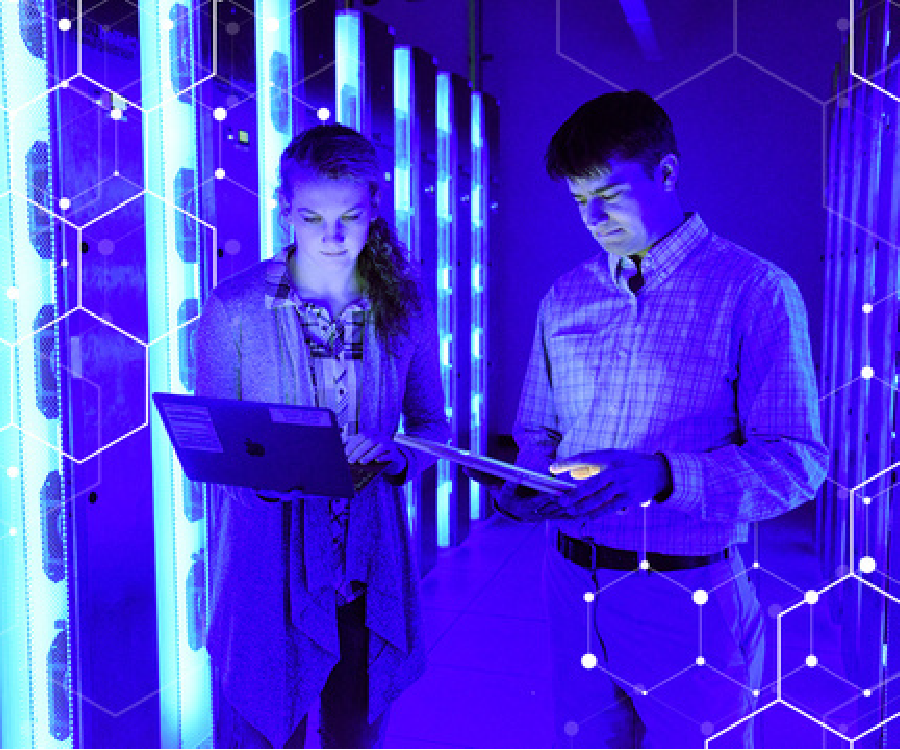YOU ASKED & WE'RE ANSWERING
20 QUESTIONS
ABOUT IDAHO NATIONAL LABORATORY
Explore the cards below and then test
your knowledge


Over the years, a lot of questions surrounding the work we do at Idaho National Laboratory have been asked. Check out the answers to the top 20 questions INL tour guides get asked below or in this digital flipbook.
Flip through to start learning, and then take the quiz to find out if you are an INL expert!
Are you an INL expert? Take the quiz to find out!
Sign up for an INL virtual facilities tour with one of our tour guides by emailing [email protected].

More than 6,000 researchers and support staff members work at INL. The lab’s contractor, Battelle Energy Alliance, is the fifth-largest employer in Idaho. Our economic impact to the state was $3.77 billion in fiscal year 2023. When you add in employees from the Idaho Cleanup Project, the U.S. Department of Energy-Idaho Operations Office and the Naval Reactors Facility, over 9,000 people work at the INL Site.
We are the nation’s nuclear energy research and development laboratory. Over the years, we have produced electricity – notably when BORAX-III supplied electricity for the town of Arco one night in 1955, marking the first time in the world’s history that a city was powered by nuclear energy. Currently, our four reactors are designed for research and do not produce electricity.
Of the 52 reactors built since 1949 at the 890-square-mile INL Site, three have generated electricity: EBR-I to prove that a reactor could generate usable electricity; BORAX-III lit Arco to prove that nuclear-generated electricity could be supplied to a public grid; and EBR-II, which between 1964 and 1994 supplied 30% to 50% of the electricity needs at the desert Site.
Nuclear waste is a broad concept. There are essentially three categories of nuclear waste – high-level, transuranic and low-level. There is also spent nuclear fuel (SNF).
The INL Site generates and manages several types of hazardous and nuclear waste, as well as SNF.
Currently, there is no commercial demand for recycling light water reactor fuel in the U.S.
Employees live in the cities and towns surrounding the desert Site. INL provides 91 buses for the more than 2,800 employees who work on the desert Site. Busing dramatically reduces the number of vehicles on the highways to safely and efficiently transport our employees to their work locations.
From its inception, INL’s focus has been to perform research and development on nuclear energy for civilian purposes such as power generation, space missions, nuclear medicine and other peaceful applications. INL has never been directly involved in building weapons, but did provide recovered uranium, some of which was used in reactor fuel for U.S. defense reactors in other states. The lab has also supported management of legacy waste from the production of materials used for defense purposes.
In 1961, a steam explosion at an experimental reactor called SL-1 killed three operators. There was a rumor that one of the men purposely caused the accident because he found out his wife was having an affair. Evidence doesn’t support this scenario. Post-accident investigations indicated the reactor featured a primitive design, and operator logbook entries noted that the central control rod had momentarily stuck in place during the previous six months. The accident led to better reactor designs, material selections and conduct of operations.
Some radioactive elements were released during the accident, primarily radioactive gases like iodine that would have dispersed (reports state 80 curies of iodine and 1,100 curies of fission products). Surveys were conducted around the area, particularly downwind of the SL-1 site. Contaminants were found at very low levels on roadways, but those contaminants were cleaned up to ensure they would not be picked up by the tires of vehicles leaving the area. No significant off-site exposure resulted from the event. The contaminated building and equipment, as well as soil and cleanup equipment, were buried near the SL-1 site to minimize the potential to spread contamination. The landfill was later capped with gravel and basalt boulders. More than 50,000 cubic yards of residual contaminated soil were removed from the SL-1 area in the early 2000s and disposed of in an on-site, lined landfill. The SL-1 site is reevaluated every five years as part of a larger five-year review plan conducted by the Environmental Restoration Program.
In partnership with private industry and government collaborators, INL is designing, developing and demonstrating advanced nuclear technologies including a new generation of small modular reactors and microreactors using our unique capabilities and robust test beds. We are also exploring clean energy solutions like large-scale hydrogen production, biofuels and energy storage options through the proposed Energy Technology Proving Ground.
Unlike a commercial reactor designed to generate heat and produce power, test reactors are used strictly for research. They are designed to accelerate fuel and material performance testing, and operate at much lower temperatures and pressures than most large-scale commercial reactors. Researchers use the reactors to perform experiments that advance nuclear energy and nuclear propulsion, and to help better understand nuclear physics. Two of INL’s four operating research reactors fall in this category.
Yes, it’s safe to drink the water. The INL Site sits on top of the Snake River Plain Aquifer, which has been impacted by legacy spills and releases. The Site’s impact on the aquifer is closely monitored by INL, along with state and federal agencies. The most recent environmental study conducted by the Environmental Restoration Program in accordance with our nation’s environmental laws concluded that any water leaving INL boundaries would meet drinking water standards. That conclusion is supported by the state of Idaho, the Environmental Protection Agency, the Department of Energy and the United States Geological Survey.
The desert portion of the INL Site is 890 square miles. That’s about 73% the size of Rhode Island or 100 square miles smaller than Luxembourg.
INL researchers study advanced energy systems, including intermittent sources such as hydropower and geothermal energy. Integrating these sources with nuclear energy ensures the creation of a resilient power supply for our nation. Laboratory research also helps bolster domestic supply chains for critical materials used in advanced energy systems.
INL’s Biomass Feedstock National User Facility state-of-the-art capabilities enable industry collaborators to scale up biomass conversion technologies. INL also helps scale up hydrogen production capabilities with our high-temperature electrolysis testbeds, where industry can evaluate and optimize technologies under real-world conditions. This work aligns the nation’s goals for a secure, affordable and abundant energy future.
Current reactors focus solely on producing electricity. In addition to producing power, future reactors will also help produce clean water, create hydrogen for vehicles and industry, and assist in new chemical processes.
INL has built 52 reactors on the desert Site. It’s the largest complex of reactors and supporting nuclear research facilities in the world. Most of the early reactors have been decommissioned and torn down after accomplishing their nuclear energy research missions. The Department of Energy currently has six operating reactors in its fleet; four of which are located at INL. These include the Advanced Test Reactor (ATR), the ATR Critical Facility, the Neutron Radiography Reactor (NRAD) and the Transient Reactor Test
(TREAT) Facility.
Only if you glowed before the tour. Dental hygienists, airline pilots and lifeguards all get more radiation exposure in their jobs than most people who work at INL. Visitors are not exposed radiation beyond background levels present in the environment worldwide.
It’s not! Some of the work we do is classified and some is proprietary, but much of it is not. We are proud of our contributions to the state, region, country and world. In fact, we love to show off what we’re doing. You can sign up for a tour of INL by emailing [email protected]. INL publishes a substantial amount of scientific and technical information, which is available at the U.S. Department of Energy Office of Scientific and Technical Information or via a bibliographic search.
To name just a few areas: We have a huge and growing cybersecurity mission, we are helping optimize advanced manufacturing and are leading efforts to improve many aspects of energy production with the use of artificial intelligence and machine learning. We also do research in wireless technology and the power grid.
We employ pretty much every type of worker you can think of. Sure, we have scientists and engineers. We also have firefighters and accountants. Check out our opportunities at inl.gov/careers.
We started here after World War II as the National Reactor Testing Station. This is where nuclear scientists could explore peaceful applications of splitting an atom. The name changed to the Idaho National Engineering Laboratory (INEL) in 1974 to reflect that, in addition to nuclear reactors, the lab’s mission expanded to many other projects. In 1999, INEL became a leading lab for environmental cleanup technology, so the name changed to the Idaho National Engineering and Environmental Laboratory (INEEL).
In 2005, the contract to operate DOE’s Idaho site facilities was split between laboratory research and cleanup work. At the same time, facilities that had been operated by Argonne National Laboratory at the Idaho Site were shifted from the DOE Chicago Operations Office to the DOE Idaho Operations Office and merged to create the new Idaho National Laboratory. It was a rebirth of the lab with an accompanying increase in capabilities and facilities available in Idaho; the name was changed to INL to distinguish it from the previous incarnations of the lab.
Processing, please wait…